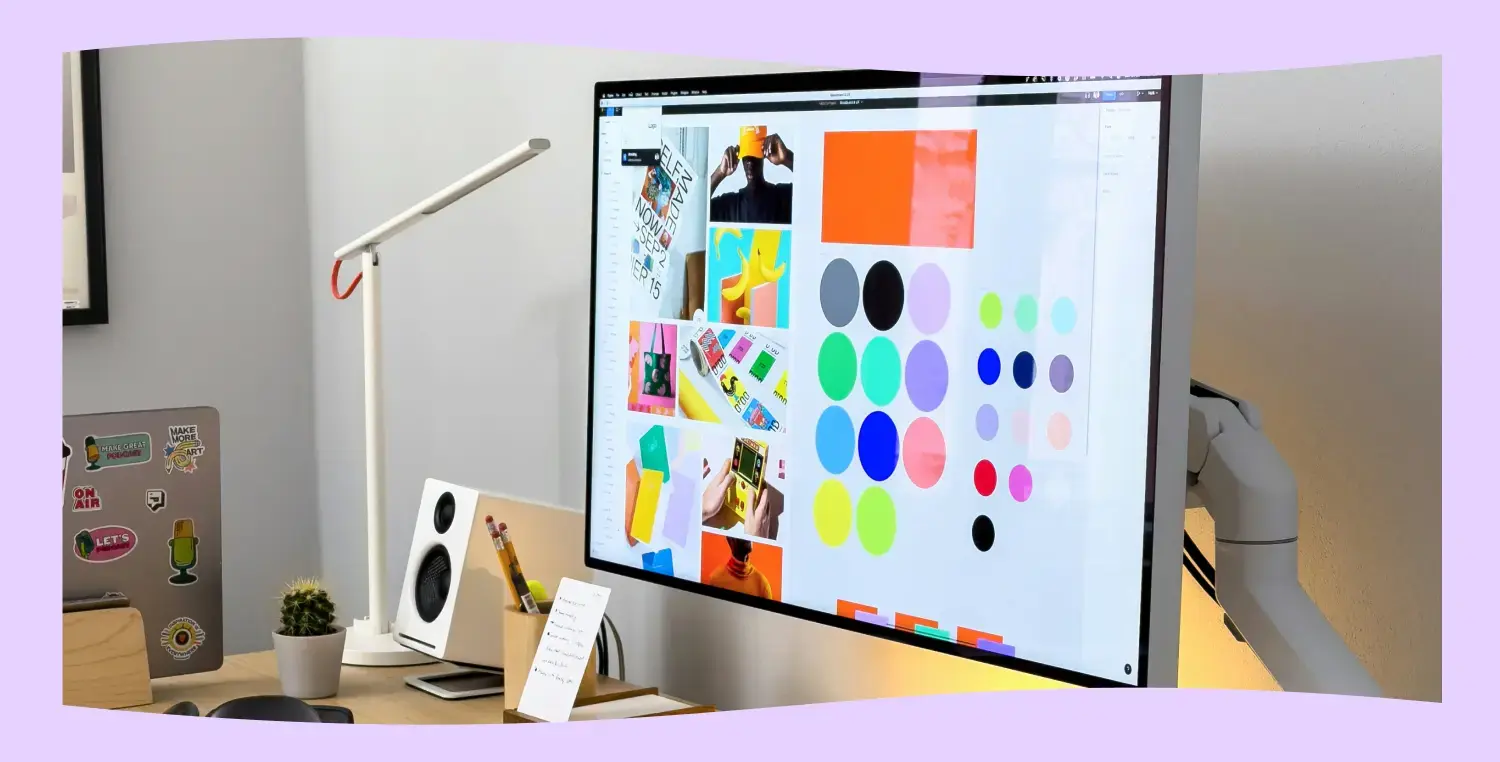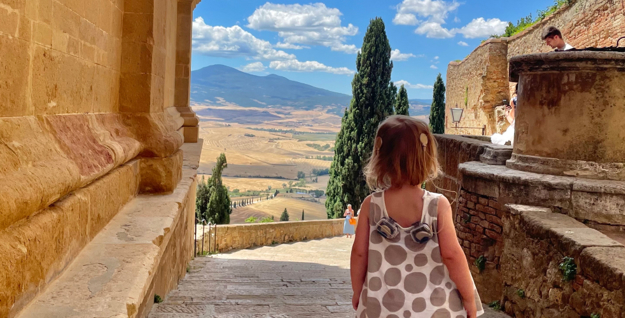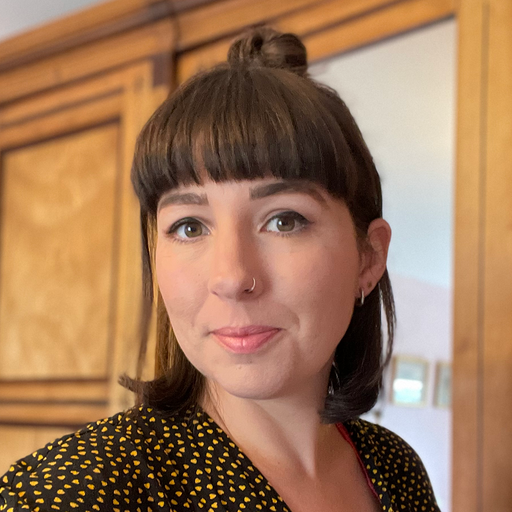As a creative specialising in digital experiences for over 15 years, I’ve known the term ‘accessibility’ for quite some time. But although I understood the broad context of the Web Content Accessibility Guidelines (WCAG) international standard, the underlying needs – the people who informed these rules – were, at best, broad generalisations. I saw ‘accessibility’ as a list of important but quite abstract (and sometimes annoying) requirements geared around making things usable for people with a disability.
All that changed in June 2020 with a diagnosis for my baby daughter, Lois – three words: profound hearing loss. I was sitting in blissful ignorance in the audiology department with Lois (newly discharged from the neonatal intensive care unit) across my lap.
The news hit me like a ton of bricks. Neither myself nor my husband had any d/Deaf family members or friends beyond people affected by age-related hearing loss. My knowledge of the Deaf community was nonexistent. I didn’t know where to begin.
That diagnosis kickstarted a profound journey of discovery for me; into the world of hearing loss, into the stories of people who identify as d/Deaf and Hard of Hearing (and those who don’t) and into Deaf identity. And that journey has changed the way I approach design.
Understanding the spectrum of Deaf experience
I discovered that hearing loss exists on a spectrum, from mild to profound. Within that spectrum, there are people who were born that way, people who lost hearing at a young age, and those who lost it later in life. There are people who choose to use devices such as hearing aids and cochlear impacts - to amplify or give access to sound - and people who choose not to. Some sign. Some lipread. Some, like my daughter, prefer a unique mishmash of speech and sign.
And diving deeper within that spectrum, you will find people who might choose to engage differently with the world depending on the time of day, what they’ve got going on in their lives or even their mood. For example, I’ve encountered many Deaf people on Instagram who might wear their devices at work or school. But, after an exhausting day of interacting with the hearing world, they encounter listening fatigue and take their devices off, choosing instead to communicate with their families in sign language.
Looking at the concept of disability in a wider context, there's an even wider spectrum. You might be permanently disabled. You might have a temporary disability (for example, an ear infection), or then there’s a situational disability, where the circumstances around you cause you to be considered disabled at that moment (like being in a busy restaurant, unable to hear the people you’re talking to).
All this has led me to believe that truly accessible design benefits us all. By focusing on providing an inclusive experience, we design for everyone and all of their needs at any given time, taking into account disability, situation, location, device and perspective. By providing options to experience the world in a different way, not only are we being inclusive, but we are enhancing everyone's experience.
Why inclusive design benefits us all
You might be aware of the concept of ‘deaf gains’. The idea is that d/Deaf people not only benefit from a different perspective on the world but that society at large has benefitted from the existence and influence of d/Deaf people.
Captions are a perfect example of this. Originally, captions were developed for d/Deaf and hard-of-hearing audiences. But now we see them everywhere. Many neurodivergent people, myself included, have auditory processing difficulties that make it difficult to understand or focus on spoken language. Using subtitles helps us follow what we’re listening to. And all audiences benefit from captions in social media and video content.
Multiple studies have shown that captions improve everyone’s attention to, understanding of and memory of content, as well as being hugely beneficial for those learning or using an additional language.
Pioneering musician Dame Evelyn Glennie lost her hearing at the age of eight. She developed a method of using her body as a resonating chamber, chasing the physical sensations of sound around her body. As well as the joy and the pleasure she has brought people through her music, she reinvented the concept of ‘listening’, teaching others to listen with more than just their ears. Through the new Evelyn Glennie Foundation, she intends to challenge ‘social deafness’, improving how people and communities connect and share with each other through ‘active listening’ - so important in an increasingly disconnected world.
How to start creating inclusive digital experiences
Say your website sees 10,000 visitors in a year. Of that number, 2,100 will have a disability, and almost all may have a temporary or situational disability at any given time.
The digital interfaces we hold in our hands – smartphones, tablets – are so much more than a screen. There are limitless possibilities to create truly inclusive experiences with them. You can see them, you can hear them, you can feel them, you can touch them. They know where you are and what you’re doing. Explore different ways to use them to tell stories.
Think about your audiences existing across a spectrum of experiences. Think carefully about what you put in as well as the content you expect to put out. Think about your brand. Is it flexible enough to enable these experiences? Does sound form part of your brand identity? What about haptics that can create tactile sensations such as vibrations?
Make accessibility everyone’s responsibility and build that into your processes. In the Design Studio at TPXimpact, we’re embedding more inclusive thinking in our practice, exploring:
- How might we leverage the myriad ways AI can enhance the experience of disabled audiences?
- How might we deliver a truly inclusive creative campaign?
- How might we learn and apply best practices in inclusive design from the disabled community?
Make ‘Nothing About Us Without Us’ your mantra
This is incredibly important. ‘Nothing About Us Without Us’ emphasises that solutions that affect the disability community shouldn’t be designed without consulting them. We should be collaborating with people in the community to design solutions together rather than designing based on limited assumptions.
An unfortunate example of a product that was designed for the Deaf community but failed due to lack of understanding is the ‘sign language glove’, designed to convert sign language into speech in real time. It was a flop because the creators failed to understand the complexity of sign language. It is not just hand movements - you use your body, face, context and the space around you to tell stories through sign.
Always be curious and keep learning and improving. Engage with the Deaf community, the Blind community, the Disabled community, and the Neurodivergent community. Seek out people with real, lived experiences. Approaching things from a different perspective can open up untapped creative avenues and result in an enhanced, inclusive experience for everyone.
Learning from Lois - a revolution beckons
My journey with my Deaf daughter has helped me to see the richness of human diversity, and exploring this helps me see opportunities to use inclusive design not just for compliance but to create full human experiences, touching everyone who engages with our creations. It has urged me to delve deep into diverse perspectives – to engage and collaborate.
I believe a revolution beckons – a chance to break free from old assumptions and embrace a new era, designing for humanity, erasing boundaries and creating an inclusive digital realm. I hope you will join me.
Where to start – a few resources
In my next article, I will share some tools you can rely on to test your website’s accessibility.
To help you look beyond your own experience, you could diversify your social feeds by following activists, educators, and influencers in this space, wherever you are social - I’ve suggested a few below.
Activists, educators and influencers you can find on social media:
- Hermon and Heroda Berhane - Black, Deaf fashion bloggers
- Kirsty Jade - Deaf creator, advocate and podcaster
- Chloé Hayden - Creator with both autism and ADHD
- Haben Girma - Deafblind human rights lawyer and disability advocate
- Isabel Mavrides-Calderón - Disabled activist and policy advocate with a youth perspective
- Molly Burke - Blind motivational speaker, influencer, and activist
- Blindish Latina - Deafblind public speaker and Diversity, Equality and Inclusion consultant
- Lucy Edwards - Blind journalist, content creator, and disability educator
- Lauren Spencer - Disability Lifestyle Awareness
- Samantha Jade Durán - Fashion Influencer, wheelchair user and inclusive Stylist
- Chrissy Marshall - Deaf creator and advocate

There's no downside to website accessibility
Read more
Five essential activities to launch your design direction
Find out how we build digital success and craft impactful design directions.
Read moreOur recent insights
Transformation is for everyone. We love sharing our thoughts, approaches, learning and research all gained from the work we do.

How agile practices and user-first approaches are key to creating joined-up services.
Read more
Common misunderstandings about LLMs within Data and Analytics
GenAI and LLMs have their benefits, but understanding their limitations and the importance of people is key to their success.
Read more
Key trends from Rewired: NHS's focus on digital ambitions
Discover insights from Rewired 2024, where NHS experts discuss the integration of AI and digital prevention strategies for advancing healthcare.
Read more

